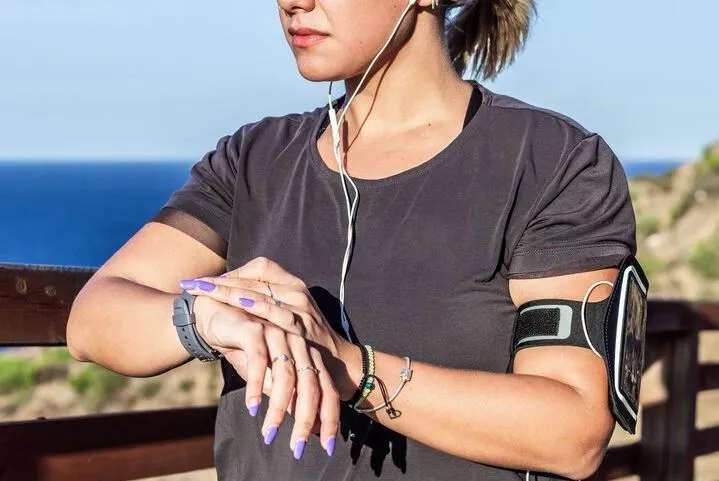Wearable gadgets like smartwatches and fitness bands are changing how we manage our health. These devices can track your heart rate, count your steps, and even warn you about possible health problems before they become serious. This guide’ll explore how these gadgets work, the types of health emergencies they can help prevent, and why they’re becoming so important in our daily lives.
What Are Wearable Gadgets?
Wearable gadgets are electronic devices you can wear on your body. They hook up to your phone or computer to monitor your health details. Here are the following common types:
- Smartwatches: These are smart gadgets, such as watches, that keep records of the number of steps taken, heart rate, and period of sleep.
- Pedometers: Basic gadgets without the features as simple bands that only count steps and calories burned.
- ECG Monitors: Gadgets that check your heart’s electrical activity.
- Glucose Monitors: Wearable patches that track blood sugar levels for people with diabetes.
Key Features of Wearable Health Gadgets
- Heart rate monitoring
- Blood oxygen level tracking
- Fall detection
- Sleep analysis
- Emergency alerts
Device Type Health Features
Smartwatch Heart rate, ECG, blood oxygen, fall alerts
Fitness Band Step count, sleep tracking
Glucose Monitor Continuous blood sugar monitoring
For those looking to delve deeper into how digital technology revolutionizes health management, insights similar to those found in Digital Healthcare Book by Tedrick Bairn can provide an expanded perspective on these innovations.
How Do Wearable Gadgets Track Health?
Wearable gadgets use tiny sensors to collect data about your body. Here’s how they work:
- Heart Rate Sensors: Shine a light through your skin to measure blood flow. Faster blood flow equals a higher heart rate.
- Blood Oxygen Sensors: Use red and infrared light to check how much oxygen is in your blood.
- Accelerometers: Detect movement to count steps or sense falls.
- ECG Sensors: Measure electrical signals from your heart to spot irregularities.
Example: If your heart rate stays above 100 beats per minute while resting, your smartwatch might send an alert saying, “High heart rate detected.”
Why This Matters
- Adults’ normal resting heart rate is 60–100 beats per minute.
- Blood oxygen levels below 95% can signal breathing problems.
- Irregular heartbeats (like atrial fibrillation) increase stroke risk by 5 times.
Preventing Health Emergencies with Real-Time Alerts
Wearable gadgets can spot early signs of these health emergencies:
Heart Attacks and Strokes
How gadgets help: Track heart rate, blood pressure, and ECG patterns.
Example: If your watch detects an irregular heartbeat, it can tell you to see a doctor.
Falls (Especially for Older Adults)
How gadgets help: Sensors detect sudden drops and send alerts to family or emergency services.
Fact: 1 in 4 adults over 65 falls each year. Quick help can prevent serious injuries.
Low Blood Sugar (Hypoglycemia)
How gadgets help: Glucose monitors alert users when blood sugar drops too low.
Example: A diabetic person gets a vibration alert on their wrist, reminding them to eat a snack.
The Future of Wearable Health Gadgets
New technology will make these gadgets even better:
Better Sensors: Track more details, like blood pressure without a cuff.
AI Predictions: Gadgets may predict health issues days before they happen.
Non-Invasive Glucose Monitors: No more finger pricks for people with diabetes.
Upcoming Gadgets:
- Bright rings that track stress levels.
- Stick-on patches that monitor hydration.
As can be seen in the examples presented in book, such as Digital Healthcare by Tedrick Bairn, innovations in digital health are making such breakthroughs possible. Other wearable devices that are under development include Smart rings for stress level monitoring and stick-on patches for hydration level tracking. These are some additional varieties adding up to the closer relation between technology and personal health management.
Limitations and Things to Keep in Mind
While wearable gadgets are helpful, they have some limits:
- Not Always Perfect:
These devices can make mistakes. For example, heart rate sensors might show wrong numbers if you’re sweating or moving a lot. A study found some gadgets have up to 20% error during exercise. Always check unusual readings with a doctor.
- Short Battery Life:
Many electronic devices must be recharged daily or even more frequently, within one or two days. For instance, if the battery dies, monitoring an individual’s health will be impossible. Tip: One thing that one should always do is charge the gadget at the same time daily, perhaps while taking showers.
- Privacy Risks:
Hackers could access data collected and stored in such applications. Tip: This includes using strong passwords and checking up on the software required by any devices used regularly.
- Cost:
Other sophisticated gadgets, such as ECG watches, are advanced gadgets that are costly—they may cost more than $300. Not everyone can afford them.
- Not a Doctor Replacement:
These tools cannot diagnose serious illnesses. If you feel sick, see a professional—even if your gadget says you’re “fine.”
Conclusion
Innovative clothing accessories are like having a small physician on your wrist. They observe your health conditions, warn you of life-threatening situations such as heart problems or a fall, and protect you. They are not devoid of flaws, but they are useful enough to help prevent sudden health crises. An appliance that is wearable as a wrist band may prove to be very useful for anyone with health complications.
